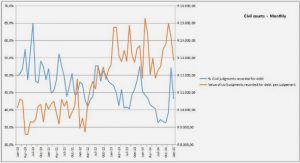Get Complete Project Material File(s) Now! »
RESEARCH POSITION AND METHOD
It is dawn; the early morning fog has not yet lifted. Before the sun breaks the horizon hundreds of athletes throughout the world begin their day as they have in the past, as they will continue to do in the future. This ritual is repeated everyday, on the beaches, the countryside, the mountains, gymnasiums, swimming pools and tracks. The already great and those who aspire to be, share the same dream, the pursuit of excellence. Bud Greenspan (in Lesyk, 2001, p.12)
Narrative metaphor
The research position and method I have taken up for this research project falls within the field of narrative psychology, in which the narrative metaphor is paramount (Lakoff & Johnson, 1980). The narrative metaphor can be seen as an alternative root metaphor in psychology, to the more paradigmatic metaphors in psychology, such as “people as computers”, “people as laboratory rats”, “people as machines”, “people as onions” and the “naïve scientist” (Monk, Winslade, Crocket & Epston, 1997; Sarbin, 1986). The narrative metaphor can be seen as a basic, perhaps the most basic mode of human understanding and the primary scheme by which human existence is rendered meaningful (Edwards, 1997; Polkinghorne, 1988).
Experience, narrative, history and culture
The narratives that people use to make sense of their experiences are shaped through time (history) and in space (culture); they are constructed historically and culturally (Coyle, 2000; Gergen, 1997, 1998, 2001; O’Hanlon, 1994; Paré, 1995; Willig, 2001; Zimmerman & Dickerson, 1994). The narrative metaphor I am using in this research project, on the one hand draws on phenomenological psychology and, on the other hand, it embraces constructionist psychology. Therefore, human experience, human experience and embodiment, human experience and temporality, as well as human experience as a culturally constructed phenomenon are important within the narrative metaphor (Butt, 1999; Crossley, 2000). The following metaphor from music explains how a narrative is shaped historically and culturally.
METHOD
The method that I have followed in the research project can be divided into the planning phase, the working phase and the reflecting phase.
Phase 1: Planning phase (Research proposal) The planning phase entailed the drafting of a research proposal, as well as getting approval for the research project from the Research Committee of the Department of Psychology, as well as from the Ethics Committee of the Faculty of Humanities, at the UP. The planning phase was conducted in 2002.
Phase 2: Working phase (Research project) The working phase consisted of two phases. On the one hand I engaged with sport psychology and on the other hand Prof. Dave Beyers and I discussed my encounter with sport psychology. These two phases were conducted simultaneously and ran from 2002 to 2004.
Chapter 1
Research position and method
PART I
BEFORE TOURING WITH SPORT PSYCHOLOGY
Chapter 2
Journal entry I
Where did it begin?
Chapter 3
Journal entry II
Problem, question and goal(s)
PART II
TOURING WITH SPORT PSYCHOLOGY
Chapter 4
Journal entry III
Sport psychology museum
Chapter 5
Journal entry IV
Sport psychology library
Chapter 6
Journal entry V
Sport psychology conference
Chapter 7
Journal entry VI
Sport psychology department
Chapter 8
Journal entry VII
Sport centre and sport institute
PART III
AFTER TOURING WITH SPORT PSYCHOLOGY
Chapter 9
Journal entry VIII
MA (Counselling Psychology) programme
Chapter 10
Journal entry IX
Does it end here?
BIBLIOGRAPHY






